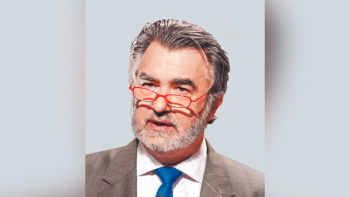
How Decentralized Trials Are Virtualizing and Revolutionizing eCOA
John Reites, CEO of THREAD Research, discusses how data collection is changing as the industry moves towards decentralized approaches.
As the clinical trials industry moves towards decentralized approaches to clinical operations, the world of electronic data is changing drastically to offer sponsors more efficient data collection and higher quality data through novel technology integration and implementation. In this interview, John Reites, CEO of THREAD Research, will discuss these changes.
Moe Alsumidaie: What is driving the significant rise in demand for electronic Clinical Outcome Assessments (eCOAs)?
John Reites: There’s an increased need for clinical trials to capture patient-reported outcomes and patient-reported outcomes through clinicians in Phase Ib, II, and III studies. Specifically, electronic patient-reported outcomes (ePROs) and clinician-reported outcomes (ClinROs) – which represent the most utilized eCOAs in study designs—are becoming a standard in pre-approval studies across most therapeutic areas.
eCOAs are no longer only being used at a structured visit level. They are being completed in between clinic visits, during telehealth virtual visits, at-home health visits, and within some unscheduled visits. Studies have a growing need for more routine quality-of-life scales and other validated scales to be conducted outside of clinic visits. We’ve seen a significant increase not just in ePRO and ClinRO use but in performance outcome assessments (PerfOs) and observer-reported outcome measures (ObsROs). These assessments are being requested more often as validated scales, with varying implementation complexity levels, and via sensor data integrations within the platform. There is also an increase in the number of new ObsROs for previously uncaptured data points in new and rare disease areas.
While eCOA use overall was already on the rise, its use has increased with the desire and ability to capture data not just during study visits but also more frequently between visits and higher recall requirements.
MA: Why has there been a need to increase data collection frequency, and what benefit is that providing to researchers?
JR: Advocacy groups, researchers, regulatory bodies, and payers have been requesting more routine inclusion of patient-focused endpoints for years with regulation support. Factors like patient quality of life (QoL) have moved from exploratory to primary and secondary endpoints at an increasing rate.
The increased data capture and frequency are about better-quality data because they are collected more consistently and timely at the source. Instead of patients keeping diaries, lists, and answering questions that require substantial recall, they can complete an eCOA on their phone immediately when alerted or during a brief telehealth Virtual Visit with the site. The ability to provide consistency and better data quality through these eCOAs with decentralized clinical trial (DCT) approaches is a crucial reason we see an increase in their use. The ability to capture trial data in this manner has made it possible for studies to use eCOAs at scale for remote capture in the Americas, EMEA, and Asia Pacific.
MA: Would it be helpful for patients to be able to see their data while they are submitting it? Could that add to the quality of the data?
JR: It can, but I think there’s a bit of an art and science balance to this answer. Scientifically, and as required by some validated ePRO, a participant’s ability to see their answers before final submission and/or see past data responses is needed. Giving this access is essential and helpful for participants as a feature. In our participant app, we offer patients the ability to view past responses, summaries, and upcoming activities, including some dashboard visualizations. This helps our customers achieve a variety of complex eCOA implementation requirements.
The art side of this discussion is that we have to be cautious not to overwhelm study participants from a user experience perspective (and the study teams that will also see this data). We may be excited to offer 50 data points in an amazing series of charts, but it could have a negative effect. In most participant insights we have gathered, providing only the critical data of interest back to participants is the desired goal. Focus on these key insights with a specific focus on the user experience is what we see achieves a mutual benefit for participants, sites, and sponsors utilizing complex eCOA.
MA: What considerations are sponsors using when selecting an eCOA that can be conducted via telehealth virtual visits?
JR: A large majority of eCOA can be conducted on-site and/or via telehealth virtual visits while maintaining its validation requirements. We have been capturing eCOA during telehealth virtual visits for years in various Phase II-IV studies where the context of use and ability to capture the eCOA as required during the telehealth session mimics the on-site visit experience. The overall experience of capturing the eCOA is very similar to the on-site experience, but we provide various more flexible device options that are routinely available in the market today.
The ability to conduct these assessments with the participant, site, home health nurse, and/or rater can be completed using the telehealth virtual visit approach that is device agnostic, does not require a provisioned device, and allows the users to be anywhere while conducting the assessment. This more flexible process fully achieves all eCOA license holder requirements such as user interface specifications, form factor restrictions, and process steps.
It is important to note that my above comments reflect a majority of eCOA but not all. As an industry, we have some eCOA that have not yet been digitally validated for use and/or require face-to-face interactions. We see several eCOA with these restrictions being developed/researched to convert them to support virtual use potentially, but this will take some time for the shift to be complete. In these cases, many processes enable these eCOAs to be captured in coordination with the other eCOAs conducted in-between visits and/or during telehealth virtual visits.
MA: How do devices such as wearables and sensors work with eCOAs in telehealth?
JR: Sensors, including wearables and medical devices, are captured via the same platform as another type of eCOA data. This data is typically captured continuously in-between visits and during structured visits via in-clinic, telehealth, and home health visits. Let’s use an example to answer the question.
In the case of a medical device (i.e., spirometer, blood pressure monitor, glucose monitor), the study participant has their kit that includes their provisioned medical device. When their visit is ready to start, they will have their device and study app. During the visit and when the medical device assessment is ready to be completed, the site team member will ask the participant to start the activity. The activity will then guide the participant in completing the medical device assessment with coaching as needed. As soon as the activity is complete, the medical device data is available for the site team member to review and move to the next part of the visit. This process works the same way, whether on-site or telehealth virtual visits.
In supporting our customers’ studies, we have learned that when you do a virtual visit, the clinician can see the patient using a device, and they can coach them and direct them just as they would during an in-clinic visit. Then, within a few seconds, the data is available for the clinician to see. While they’re not in the same physical location as the participant, they can mimic and conduct the entire assessment using sensor-based eCOA during the virtual visit.
At THREAD, we’ve been supporting eCOA completion at the site and via telehealth virtual visits for years. Although it may sound simple, there are several complexities in eCOA implementation, and telehealth learned from experience. The ability to conduct eCOA via hybrid approaches, including in-clinic visits, telehealth virtual visits, and home health visits, is an approach that most studies can utilize globally when all validation, multilingual and regulatory requirements are met. I am excited to see and be a part of our industry’s shift to more flexible, hybrid, decentralized approaches that include eCOA as key study endpoints.
Moe Alsumidaie, MBA, MSF, is a thought leader and expert in the application of business analytics toward clinical trials, and Editorial Advisory Board member for and regular contributor to Applied Clinical Trials.
Newsletter
Stay current in clinical research with Applied Clinical Trials, providing expert insights, regulatory updates, and practical strategies for successful clinical trial design and execution.




